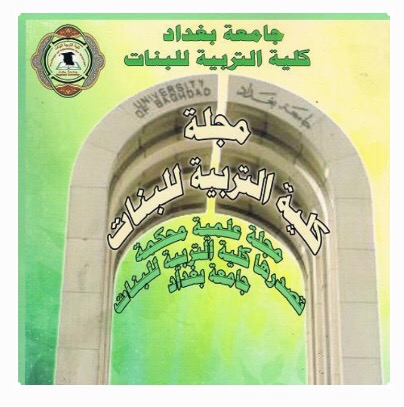The Separation Worry and its Correlation with Working Memory of the Primary School Pupils
Abstract
The concept of the separation worry is considered one of the common disorders in children. The causes and effects of this worry influence the child mental and cognitive ability and the child ability to communicate with others, has friendship and the ability of adaptive with the environment, peers and teachers and it also influences the child's academic and social performance.
The importance of this study is represented in handling the working memory, one of important subject in cognitive psychology. Many universal studies show that the working memory is very important in several daily functions such as continuous attention, followinstructions, implement instructions of many steps, the moment of information remembering and keep focusing.
Working memory is an important cognitive variable that is influenced in many problems and disorders the children faced. Therefore, the relationship between the separation worry and working memory should be explored.
The present study aimed to identify the separation anxiety in working memory and its relationship to the primary school pupils, For achieving these aims the researcher constructs a worry separation scale depending on Bowlby's perspective for this concept. She also adopts the working memory scale, constructed by Abd alwahed (2005), the researcher finds out the validity of both scales and the reliability of the separation worry scale and then she analyzes statistically the items of separation worry scale on sample of (400) pupils. Finally, both scales have been administered on (150) pupils from Baghdad primary schools/ Karkh and Rusafa, selected by using random stratified sampling. The results of the study show that:
1. The primary school pupils have separation worry.
2. The level of aural storing period is higher than the level of the aural capacity for the working memory and the level of visual capacity is higher than the visual storing period for the working memory of the primary school pupils.
3. There is grouping from being far from mother according to the separation worry predictions at working memory aural capacity of the primary school students.
4. There is grouping from being far from mother and physical symptoms according to the separation worry predictions the working memory aural storing period of the primary school students.
5. There is grouping from being far from mother, physical symptoms, and the child fears according to the separation worry predictions at working memory visual capacity of the primary school students.
6. There is grouping from being far from mother, physical symptoms and the child fears according to the separation worry predictions at working memory visual storing period of the primary school students.

Published
Issue
Section
License
![]()
All articles published in Journal of College of Education for Women are licensed under a Creative Commons Attribution 4.0 International License.










